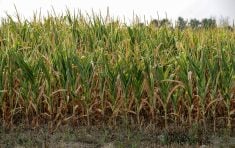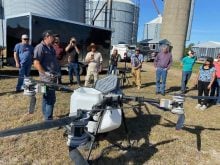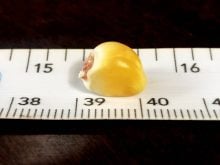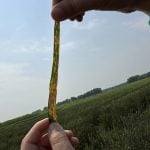Planting wider row corn requires adjustments to planting and fertilizer practices, but some are finding it worth the effort.
Eric Miller of the Miller Malting Company in Iowa was trying to get better growth from his cover crop in corn. Like many, Miller found that trying to grow a three-way cover crop in 30-inch corn row spacing was a challenge. He mostly ended up with annual ryegrass.
Why it matters: Establishing cover crops in growing corn is a challenge and 60-inch rows could be a solution.
Read Also
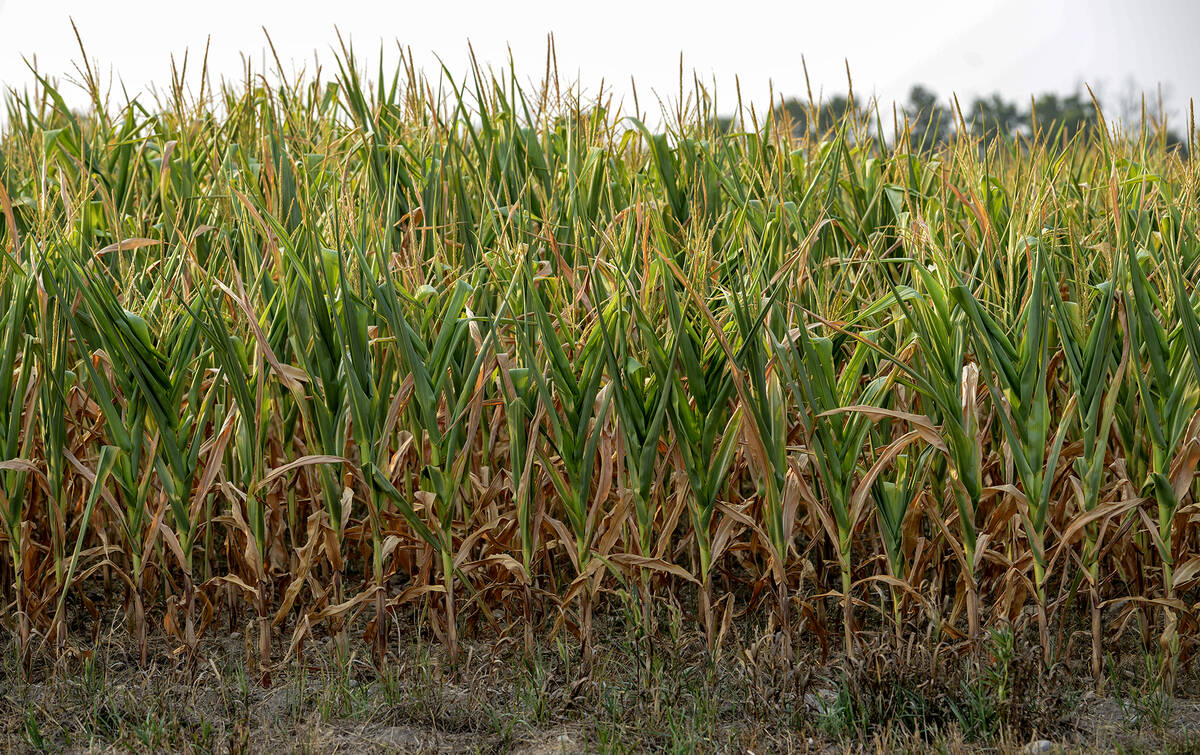
Extreme variability marks Ontario’s 2025 corn crop
The yield potential of Ontario’s 2025 corn crop was lost in some areas due to extreme dry conditions.
He decided to give double-row, 60-inch corn a try and has found that he’s getting similar yields to 30-inch corn, with stronger cover crop growth.
“I wanted more diversity out there,” including the ability to create more root exudates by keeping roots in the soil, he said during the recent Innovative Farmers Association of Ontario (IFAO) conference.
There were also soil health challenges that he was aiming to fix with more of a solid cover crop stand.
They included reducing washouts on slopes as he is seeing larger rain events in Iowa.
He says the annual ryegrass helps with rain infiltration and helps hold soil to reduce erosion. Shallow soils also meant more compaction, but he sees an improvement with cover crops.
Miller started out planting corn in 60-inch rows using what he had available – in this case a soybean planter. He blocked off some rows to get the double rows 60 inches apart.
Sixty inches apart also makes planting a cover crop easier. His first interseeder was a rotary hoe with a Valmar seed unit mounted on top. It planted the seed, but it also stirred up a lot of dirt –as a rotary hoe is designed to do – and with it stirred up weed seeds.
The next year he used an older drill modified so that it would seed between the rows of corn. He uses an Acuratrak system to help keep the drill in place, considering the hills on his farm means that it will slide without some guidance. The system guides equipment between the rows of crops.
He’s now running a CaseIH 1200 planter as a base for his double-row, 60-inch corn.
He hasn’t set up the planter for liquid fertilizer in furrow, but will for 2021.
For last year, he used the Valmar unit on the planter and John Deere single disc openers that ran between the twin rows to put down the fertilizer.
“I’m all in. I saw the benefit and didn’t see any yield drag,” he says.
The 60-inch rows allowed him to move to a 17-way mix of cover crops. The cover crops grew well, especially where the corn was shorter in sandier areas. That’s OK by Miller as it has improved conditions in lighter soils.
Miller is trying to figure out why 60 inch rows are working well for him. He says some of it is likely to do with how far down the plant leaves remain green when there isn’t as much competition compared to 30-inch rows. He says he’d like to see more research done to confirm his thought.
He says fertilizer placement is critical and he’s aiming to place fertilizer in between the double rows. The fertilizer needs to be banded as with 60-inch rows, the corn plant roots have further to go to make use of broadcast fertilizer.
Harvest isn’t a problem either, says Miller. He uses a regular eight-row corn head and it has worked fine to harvest the double rows. He has to go a bit slower, but the twin-row corn plants hug each other and flow well through the header.
Miller continues to increase his acres in 60-inch corn, especially after two fields next to each other, one 60- inch rows and the other 30. The 60-inch row field had less drought stress and the difference between the two was only the row spacing.
Key points to planting corn at 60-inch rows
- Band the fertilizer.
- Select short stature corn with upright leaves to grow more biomass in the covers for livestock. Tall corn with horizontal leaf structure uses more sunlight, which increases yield, but chokes the covers.
- Maintain good planter spacing between plants.
- Keep a high rate of cover crop seeds to better compete with weeds.
- Don’t plant cover crops too early, or they can compete with corn.
- Don’t plant a cover crop that will compete with corn.
- Only use short-term residual herbicides.




